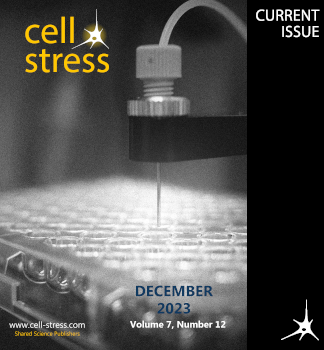应激和儿茶酚胺调节骨髓微环境促进肿瘤发生
IF 3
Q2 CELL BIOLOGY
引用次数: 22
摘要
高血管化和局部分泌因子使骨髓(BM)微环境对肿瘤细胞和骨骼特别有利,成为不同来源的弥散性癌症细胞的优选转移部位。骨髓中的癌症细胞归巢和增殖受与骨髓小生境细胞(例如成骨细胞、内皮细胞和间充质基质细胞(MSC))、固有造血干细胞和祖细胞(HSPCs)以及导致恶性进展期间骨髓微血管密度增强的促血管生成细胞因子的复杂相互作用的调节。据报道,响应交感神经系统(SNS)的激活而释放的压力和儿茶酚胺神经递质调节各种BM细胞,从而可能影响癌症的进展。在此,我们综述了儿茶酚胺在肿瘤发生过程中的作用,特别关注BM小生境介导的促肿瘤作用。本文章由计算机程序翻译,如有差异,请以英文原文为准。
Stress and catecholamines modulate the bone marrow microenvironment to promote tumorigenesis
High vascularization and locally secreted factors make the bone marrow (BM) microenvironment particularly hospitable for tumor cells and bones to a preferred metastatic site for disseminated cancer cells of different origins. Cancer cell homing and proliferation in the BM are amongst other regulated by complex interactions with BM niche cells (e.g. osteoblasts, endothelial cells and mesenchymal stromal cells (MSCs)), resident hematopoietic stem and progenitor cells (HSPCs) and pro-angiogenic cytokines leading to enhanced BM microvessel densities during malignant progression. Stress and catecholamine neurotransmitters released in response to activation of the sympathetic nervous system (SNS) reportedly modulate various BM cells and may thereby influence cancer progression. Here we review the role of catecholamines during tumorigenesis with particular focus on pro-tumorigenic effects mediated by the BM niche.
求助全文
通过发布文献求助,成功后即可免费获取论文全文。
去求助
来源期刊

Cell Stress
Biochemistry, Genetics and Molecular Biology-Biochemistry, Genetics and Molecular Biology (miscellaneous)
CiteScore
13.50
自引率
0.00%
发文量
21
审稿时长
15 weeks
期刊介绍:
Cell Stress is an open-access, peer-reviewed journal that is dedicated to publishing highly relevant research in the field of cellular pathology. The journal focuses on advancing our understanding of the molecular, mechanistic, phenotypic, and other critical aspects that underpin cellular dysfunction and disease. It specifically aims to foster cell biology research that is applicable to a range of significant human diseases, including neurodegenerative disorders, myopathies, mitochondriopathies, infectious diseases, cancer, and pathological aging.
The scope of Cell Stress is broad, welcoming submissions that represent a spectrum of research from fundamental to translational and clinical studies. The journal is a valuable resource for scientists, educators, and policymakers worldwide, as well as for any individual with an interest in cellular pathology. It serves as a platform for the dissemination of research findings that are instrumental in the investigation, classification, diagnosis, and therapeutic management of major diseases. By being open-access, Cell Stress ensures that its content is freely available to a global audience, thereby promoting international scientific collaboration and accelerating the exchange of knowledge within the research community.
 求助内容:
求助内容: 应助结果提醒方式:
应助结果提醒方式:


